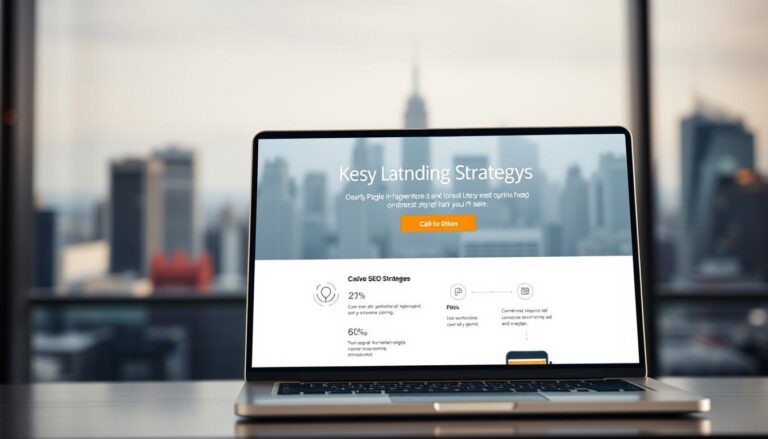Understanding how proximity, relevance, and prominence guide search results helps businesses aim at the right mix of actions. Google’s local algorithm favors nearby, well-matched, and well-known listings when showing the Local Pack and local organic pages.
The most influential signals are clear: on-page optimization accounts for about 28% of impact, Google Business Profile signals near 21%, links contribute 19%, and reviews add roughly 11%. These averaged weights show where to focus first.
Success requires balance. Combine strong on-page content and technical setup with off-site trust builders like citations, links, and steady reviews. Accurate NAP, correct categories, and consistent data create a trust baseline for search engines and people.
Address both the Local Pack and localized organic results to cover all customer entry points. Plan for “near me” intent and location-focused pages while monitoring algorithm updates and competitor shifts.
This guide will give actionable steps to optimize profiles, strengthen pages, build authority, and measure results so your business attracts qualified customers, not just vanity metrics.
Key Takeaways
- Proximity, relevance, and prominence drive local search visibility.
- Prioritize on-page signals, Google Business Profile, links, and reviews.
- Balance site optimization with off-site listings and citations.
- Cover both Local Pack and organic pages for full coverage.
- Keep NAP accurate and monitor algorithm and competition regularly.
Understanding local search intent and Google’s pillars: proximity, relevance, and prominence
Knowing how users search helps set realistic goals for visibility. Google’s algorithm evaluates proximity, relevance, and prominence to decide which business listings and pages to show.
How proximity limits strategy
Proximity is the physical distance between a user and a business. It creates a natural boundary: address accuracy and service-area settings matter, but you can’t move the map for everyone.
Signals that boost relevance
Relevance shows how well a profile and website match user intent. Clear primary categories, focused on-page headings, and review language that mirrors queries all help search engines read your offer.
Prominence and trusted businesses
Prominence grows from backlinks, citations, and review quality and volume. Recognized businesses get more clicks, calls, and dwell time—signals that reinforce ranking.
- Sharpen your primary category and page copy to match services and locations.
- Request and respond to reviews to improve relevance and reputation.
- Prioritize markets where proximity aligns with target customers; then layer prominence work to win the Local Pack.
Google Business Profile optimization for visibility in Google Maps and Google Search
A well-claimed business profile is the foundation for how you appear in Google Maps and search. A clear profile helps searchers decide fast and boosts engagement from map results and organic listings.
Primary and additional categories: aligning with search engines
Choose the most accurate primary category first. It is the top factor for Local Pack visibility.
Add up to four tightly relevant additional categories to expand reach without diluting relevance. BrightLocal data shows profiles using four extra categories often rank higher on maps.
Complete NAP, hours, and attributes that improve local search results
Claim one verified profile and keep a consistent name, address, and phone number. Small mismatches can reduce trust and split signals across listings.
Update hours, holiday schedules, and attributes so customers know when you’re open. Fully completed profiles are about 70% more likely to attract engagement.
What doesn’t move rankings in GBP but can help conversions
Geo-tagged photos, product descriptions, Google Posts frequency, messaging, and service area settings don’t directly change rankings.
Still add them. These elements improve clarity, increase conversions, and can raise profile-driven calls and visits.
- Use UTM links to track profile traffic and calls.
- Encourage and reply to reviews to strengthen prominence.
- Audit competitor categories to find quick wins.
On-page SEO ranking factors that strengthen relevance and local search performance
On-page work connects your website to real user queries. Small technical and content updates send clear signals to search engines and help visitors act.
Titles, meta descriptions, and boosting click-through rate
Write concise title tags that include the primary service and city. Pair them with meta descriptions that state a clear benefit to raise your click-through rate.
H1-H3 structure, keywords, and helpful content signals
Use a clean H1 that names the service and location. Break topics into H2/H3 with short paragraphs and natural keywords to show depth without fluff.
Schema for business, reviews, and services
Add LocalBusiness, Service, and aggregateRating schema so engines parse address, hours, and reviews. Structured data can improve how snippets display and increase trust.
Internal links, outbound links, and URL structures
Keep URLs readable (for example /city/service/). Build internal links from main service pages to location pages to pass authority.
Include one outbound link to a reputable resource when useful and optimize images with descriptive alt text that mentions service and city.
- Embed NAP in the footer and contact page.
- Check mobile speed and core vitals to reduce friction for on-the-go searches.
- Update page content regularly to reflect real customer phrasing from reviews and queries.
Reviews as trust and prominence signals that influence rankings and customers
Customer reviews are one of the clearest signals of trust that search engines and people use to judge a business. They impact both prominence and relevance, and the language in feedback often reinforces service and place keywords.
Volume, velocity, and sentiment across Google and industry sites
Search engines weigh total numbers, frequency, diversity, and quality when evaluating reviews. A steady flow of positive feedback boosts visibility and improves local search ranking over time.
Responding to reviews to enhance engagement and visibility
Replying fast and thoughtfully shows active management and encourages more customers to write. Address negatives openly, move sensitive details offline, and follow up to show resolution.
- Request reviews after purchase with easy links to major platforms.
- Publish relevant reviews on matching location or product pages on your website.
- Train teams to solicit and respond compliantly; avoid incentives that violate policies.
- Track sentiment and volume by location to boost underperforming areas and inform content or service updates.
Link building and authority: local, relevant links that lift rankings
Targeted outreach to contextually relevant websites gives service and location pages meaningful authority. High-quality backlinks from reputable sites strengthen both prominence and relevance for a business in search.
Topical and geographic relevance often outweigh raw domain authority. Use tools like MozBar to check domain authority, page authority, and spam score before accepting links. Avoid sources with high spam indicators.
Anchor text and page-level authority
Map each outreach effort to a specific service or city page. Use natural anchor text that reflects the page purpose and favor branded and topical variations over exact-match phrases.
Quality control: avoiding spammy links
- Earn links from chambers, community groups, local news, and niche sites for real relevance.
- Create linkable assets—guides, data, event pages—that attract organic citations.
- Audit backlinks regularly and disavow harmful URLs to protect long-term ranking.
Citations and business listings: consistency of Name, Address, Phone number
Consistent directory entries help search engines and customers find the right contact details fast. Citations across reputable directories like Yelp, Yellow Pages, Bing Places, and local chambers boost prominence for local businesses.

Businesses with consistent NAP across major sources are about 40% more likely to appear in the Local Pack. Use your website as the single source of truth to avoid conflicting information.
Where to list
Start with major platforms and add trusted regional or industry sites. Prioritize accuracy over quantity when creating business listings.
- Create or update profiles on Google, Bing Places, Yelp, and Yellow Pages.
- Join local chambers of commerce and niche directories that serve your community.
- Favor authoritative sites that deliver the most value per citation.
Managing NAP consistency
Standardize your official Name, Address, and phone number and audit entries regularly. Merge or suppress duplicates to consolidate authority and prevent mixed signals to the algorithm.
- Track status with a central sheet or a tool like BrightLocal and note login details and last update.
- Align categories, hours, URLs, and descriptions so all listings mirror your website.
- For multi-location brands, use templates while customizing fields like suite numbers and neighborhoods.
Monitor Local Pack visibility after updates to correlate citation work with improved search results and ranking. Small, consistent edits often pay off over time.
Behavioral signals that reflect real customer engagement
Behavioral signals show how visitors interact with a listing and website. Metrics such as click-through rate, mobile clicks-to-call, and dwell time gave about 8% influence to the Local Pack in 2023. These signals are not easy to fake, so improving user experience is the best path forward.
CTR, mobile calls, and dwell time as ranking signals
Optimize titles and meta descriptions to lift your click-through rate from search results. Make them benefit-driven and clearly local so customers recognize relevance at a glance.
- Track mobile clicks-to-call from your profile and key landing pages to see if visitors act fast.
- Improve page speed and above-the-fold clarity to increase dwell time and cut bounce rates.
- Use schema, concise headers, and clear CTAs to match intent and reduce friction for users.
- Compare engagement from google search organic vs. the Local Pack to find distinct opportunities.
- A/B test headlines and hero CTAs; report improvements alongside rankings to show ROI.
Action tip: Align on-site copy with real questions from calls and reviews, and keep hours and contact links up to date so visitors convert into customers quickly.
Personalization and location: what you can and can’t control
Search results can shift when engines learn a person’s habits, past clicks, and saved places. This personalization nudges local search results but rarely overrules core ranking signals.
What you can control: keep your business data accurate, publish helpful content, earn strong reviews, and remove friction across devices.
- Routine commuting and habitual locations may nudge proximity, but you can’t change a true location.
- Repeated interactions—calls, clicks, check‑ins—make a listing feel more relevant to specific people.
- Support multiple audiences with dedicated pages and clear attributes for multilingual users.
Personalization creates variance; monitor trends, not single-user quirks. Focus on trust and utility so engines present your business reliably across different searches and contexts.
Proximity and service areas: content and page strategy for local businesses
Proximity often decides whether a searcher sees your business or a competitor first. For “near me” and city-modified queries, distance shapes who appears in the map pack and organic results.

Targeting “near me” and city-based modifiers in content
Use city and neighborhood keywords naturally in titles, H1s, and the intro paragraph so pages match how people type queries. Keep phrasing conversational—think of how residents refer to places and landmarks.
Embed a Google Maps widget on pages with a storefront and include full NAP. For service-area businesses, state covered cities clearly and list typical routes or zip codes served to reduce ambiguity.
Multi-location considerations for businesses
Create unique, high-quality location pages for each priority area. Each page should list specific services, testimonials from nearby customers, and local landmarks to avoid thin duplication.
- Internal links: Link from the homepage and main service pages to each location page to pass authority.
- Localized media: Add neighborhood photos, case studies, and route maps to boost engagement.
- Scale with templates: Use consistent on-page patterns but allow custom text so each page stays unique.
Monitor rankings and calls by city to spot pages needing more content, reviews, or local links. Refresh pages seasonally and after events to capture demand spikes and keep your business visible when it matters most.
Local content and landing pages that capture local search
When your pages show tangible community ties, they attract more targeted visitors and better engagement signals. Build each location landing page to answer practical questions: where you operate, what you do, who will help, and how to get started.
Location pages, blogs, events, and embedded Google Maps
Design unique pages for each service area with staff bios, neighborhood references, and project examples. Use short, conversational paragraphs that mirror real queries.
Embed Google Maps on storefront and contact pages to give instant directions. Add event pages, press updates, and neighborhood guides to show active community involvement.
Using reviews widgets and social proof to increase visibility
Publish review snippets or widgets on relevant pages to provide social proof and lift click-through rates. Highlight recent feedback and outcomes to make trust visible at a glance.
- Write FAQs that match conversational queries to capture long-tail intent.
- Interlink blog content to core service pages to pass authority and guide visitors toward conversion.
- Add structured data for events, FAQs, and services to improve rich result eligibility.
- Track which page types generate leads and replicate top performers across your website.
Putting local seo factors into action for sustainable rankings
Turn strategy into steady gains with a 90-day plan, and focus effort where data shows the most impact. Start with on-page updates (28%) and a complete Google Business profile (21%), then layer link building (19%) and a steady reviews program (11%).
Confirm NAP consistency across listings—matching your website phone number and address raises the chance of appearing in the Local Pack by about 40%. Use MozBar to vet link quality and BrightLocal to manage citations and review monitoring.
Track clear outcomes: monitor search results visibility, calls, directions, and leads. Test schema, internal links, and meta tweaks incrementally, then scale winning page templates to other locations.
Strong, consistent execution and quarterly reassessments protect gains and keep rankings improving over time.










